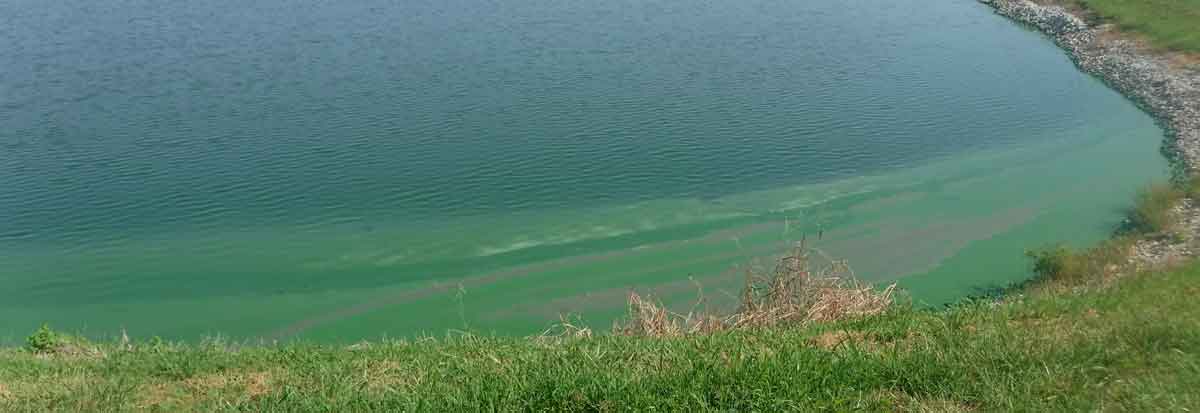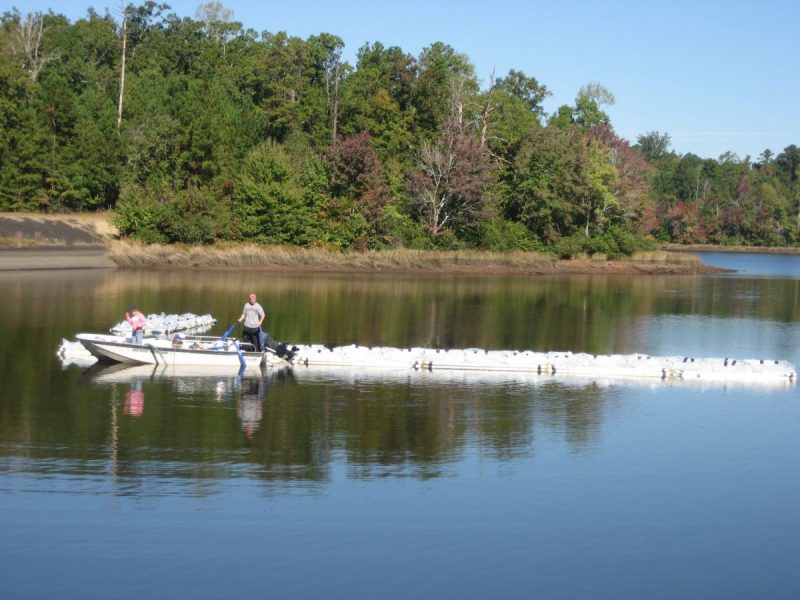
Research Areas
Drinking Water

Sub-Catagories
Description
Factors leading to taste, odor, and toxicity issues in drinking water reservoirs.
Current Projects
Dimensions of Biodiversity: Collaborative Research: Phylogenetic, genetic, and functional diversity of the cyanobacterial bloom interactome from local to global scales
Funding: National Science Foundation (Dimensions of Biodiversity program) - $1,999,994
August 2018 - September 2024
Dave Hambright (OU PI) and Lee Krumholz (co-PI) (University of Oklahoma), Hans Paerl (UNC PI, University of North Carolina at Chapel Hill), and Morgan Steffen (JMU PI, James Madison University)
Past Projects
Engineering a cost-effective biochar-surfactant system for sorption and degradation of PFAs in drinking water and groundwater in Alabama
Funding: AWRRI USGS section 104 program - $25,000
September 2021 - August 2022
Dengjun Wang (PI, Auburn University) and Jim Stoeckel (co-PI, Auburn University)
Creating a tool for forecasting harmful algal blooms using earth observations and machine learning to predict (HELP) high risk surface water sources
Funding: AAES AgR-SEED program - $149,546
September 2021 - August 2023
Stephanie Rogers (PI, Auburn University), Yin Bao (co-PI, Auburn University), and Edna Fernandez-Figueroa (co-PI, Auburn University)
Publications
- Bagherian, K, E. G. Fernández-Figueroa, S. R. Rogers, A. E. Wilson, and Y. Bao. 2024. Predicting chlorophyll-a concentration and harmful algal blooms in Lake Okeechobee using time-series MODIS satellite imagery and long short-term memory. Journal of the ASABE.
- Higgins, B. T., M. Thomas, P. Goodling, and A. E. Wilson. 2024. Development of a new primer tool for quantification and identification of geosmin-producing cyanobacteria in drinking water reservoirs. Limnologica:126183. - Link to Publication
- Hamid, A., A. E. Wilson, H. A. Torbert, and D. Wang. 2023. Sorptive removal of phosphorus by flue gas desulfurization gypsum in batch and column systems. Chemosphere 320:138062. - Link to Publication
- Buley, R. P., M. F. Gladfelter, E. G. Fernandez-Figueroa, and A. E. Wilson. 2022. Can correlational analyses help determine the drivers of microcystin occurrence in freshwater ecosystems? A meta-analysis of microcystin and associated water quality parameters. Environmental Monitoring and Assessment 194:493. - Link to Publication
Ecology of Toxins and Taste and Odor Compounds in Drinking Water Reservoirs
- Barros, M. U.G., J. I.R. Leitão, T. R.B.T. Aranha, S. Simsek, R. P. Buley, E. G. Fernandez-Figueroa, M. F. Gladfelter, A. E. Wilson, and J. Capelo-Neto. 2020. Icyano: A cyanobacterial bloom vulnerability index for drinking water treatment plants. Water Supply 20(8):3517-3530. - Link to Publication
- Fernandez-Figueroa, E. G., R. P. Buley, M. U.G. Barros, M. F. Gladfelter, W. D. McClimans, and A. E. Wilson. 2021. Carlson’s trophic state index is a poor predictor of cyanobacterial dominance in drinking water reservoirs. AWWA Water Science 3(2):e1219. - Link to Publication
- Barros, M. U. G., A. E. Wilson, J. I. R. Leitão, S. P. Pereira, R. P. Buley, E. G. Fernandez-Figueroa, and J. Capelo-Neto. 2019. Environmental factors associated with toxic cyanobacterial blooms across 20 drinking water reservoirs in a semi-arid region of Brazil. Harmful Algae 86:128-137. - Link to Publication
- Olsen, B. K., M. F. Chislock, and A. E. Wilson. 2016. Eutrophication mediates a common off-flavor compound, 2-methylisoborneol, in a drinking water reservoir. Water Research 92:228-234. - Link to Publication
- Olsen, B. K., M. F. Chislock, A. Rebelein, and A. E. Wilson. 2017. Nutrient enrichment and vertical mixing mediate 2-methylisoborneol and geosmin concentrations in a drinking water reservoir. Water Science and Technology: Water Supply 17(2):500-507. - Link to Publication
- Chislock, M. F. 2015. Ecology and management of off-flavors and cyanotoxins. LakeLine. Winter 2015:43-46
- Higgins, B. T., M. Thomas, P. Goodling, and A. E. Wilson. 2024. Development of a new primer tool for quantification and identification of geosmin-producing cyanobacteria in drinking water reservoirs. Limnologica:126183. - Link to Publication
- Bagherian, K, E. G. Fernández-Figueroa, S. R. Rogers, A. E. Wilson, and Y. Bao. 2024. Predicting chlorophyll-a concentration and harmful algal blooms in Lake Okeechobee using time-series MODIS satellite imagery and long short-term memory. Journal of the ASABE.